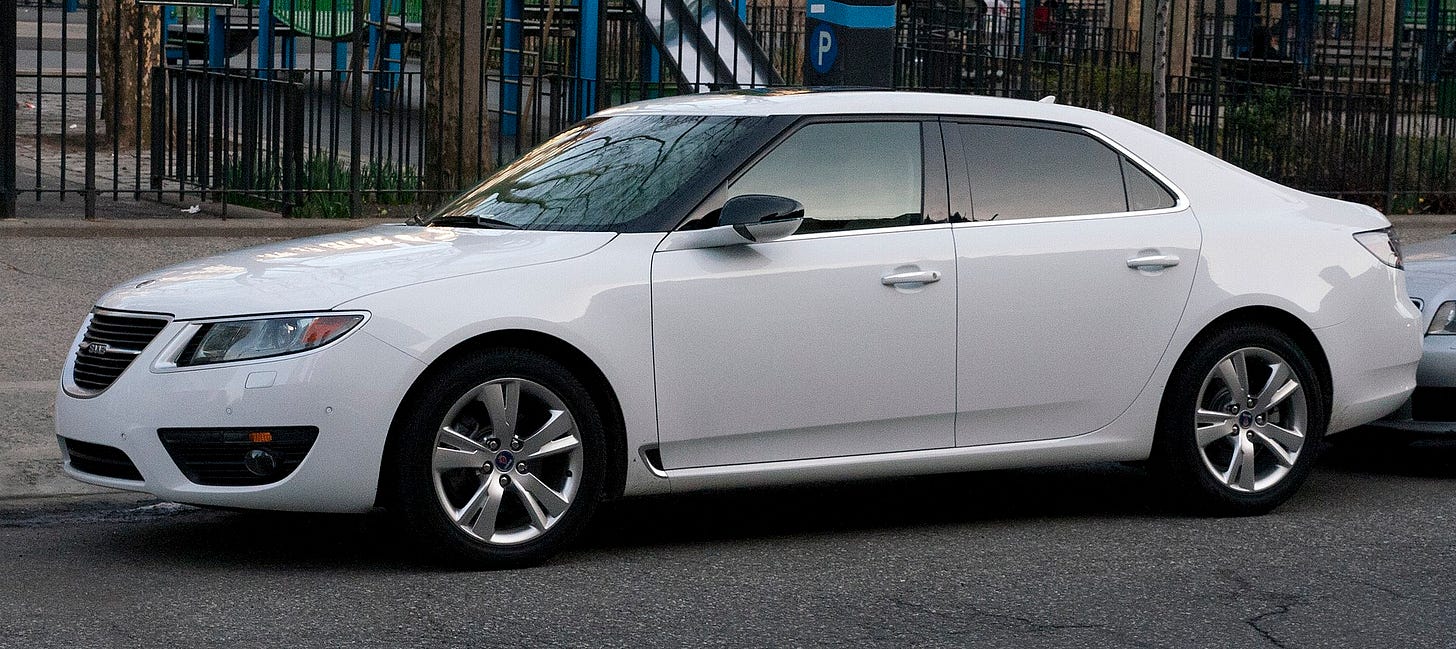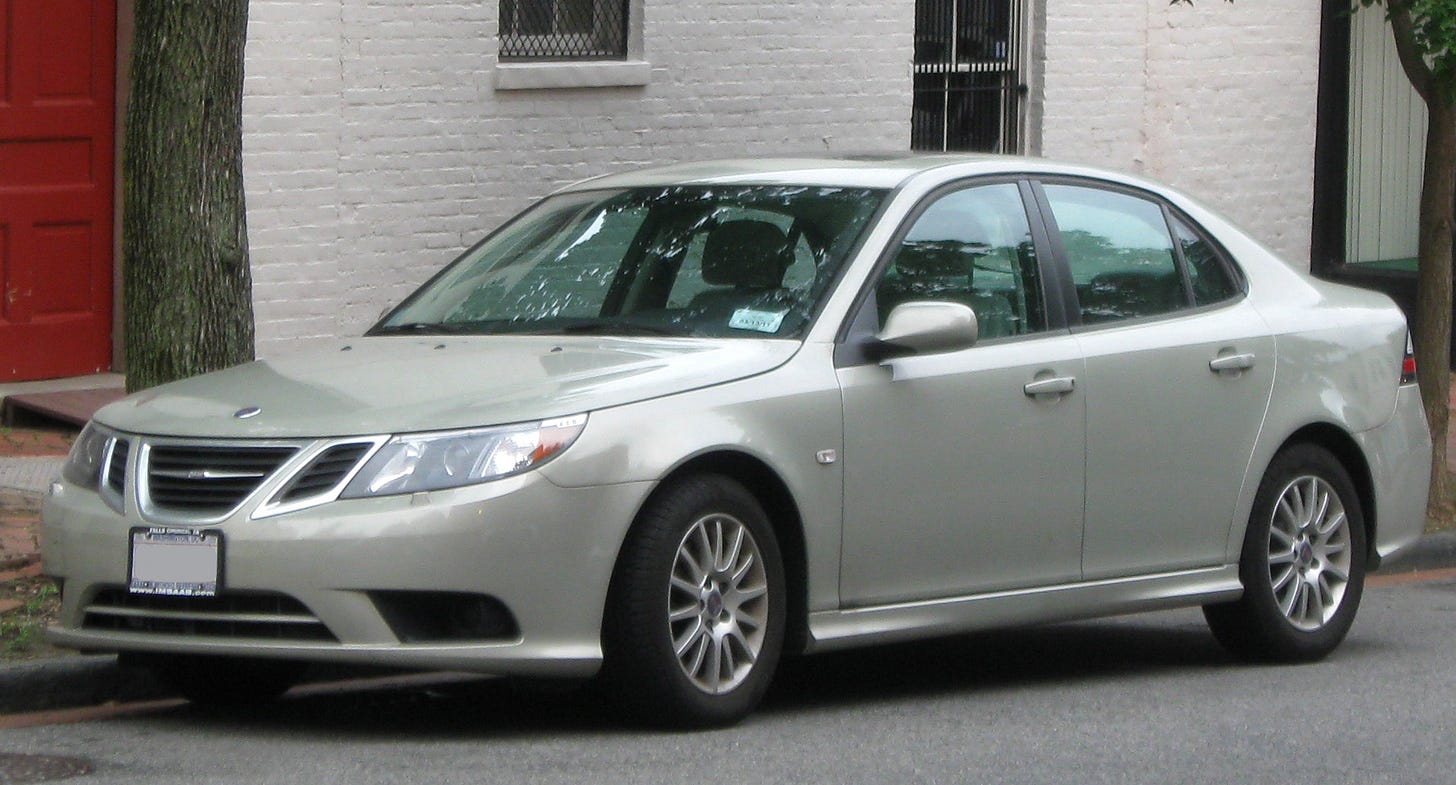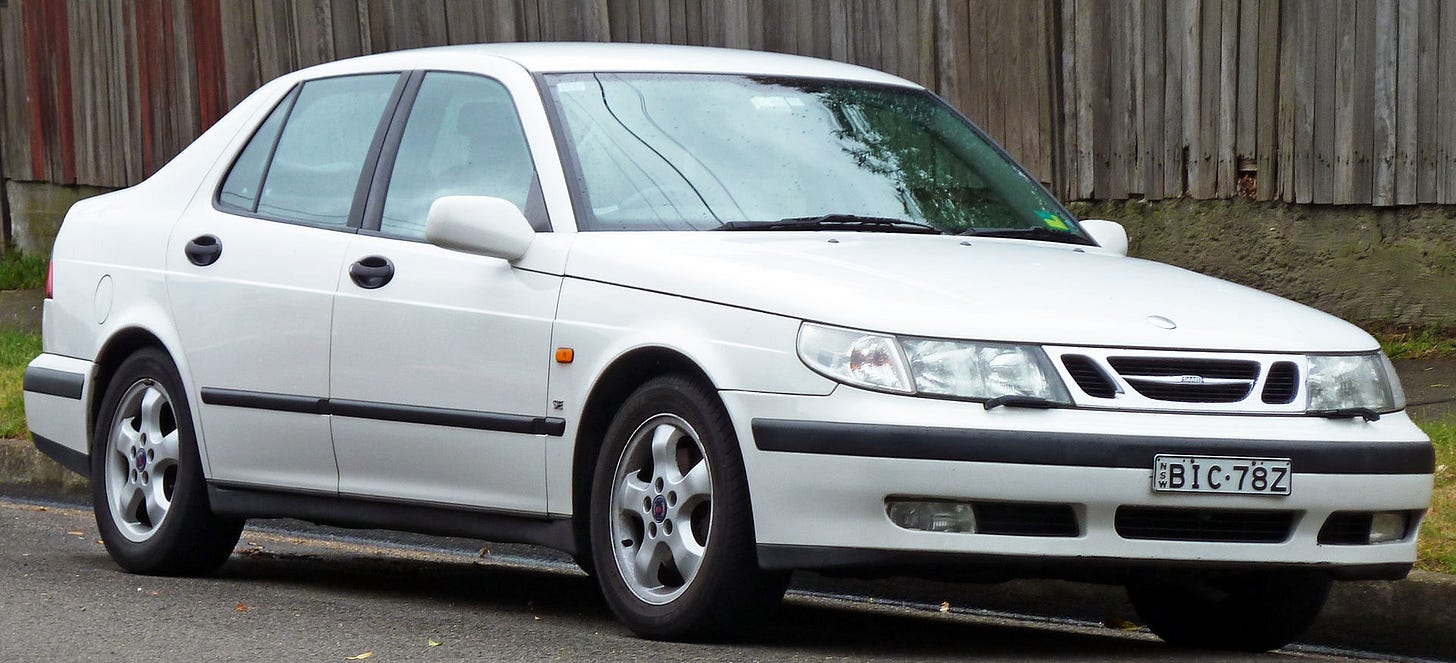A Saab Story
The Rise and Fall of an Iconic Brand
One of the auto industry's most famous brands suffered an ignominious death, not from a thousand cuts, but enough to do the job.
But first a little history. Saab Automobile AV was spun-off from Swedish Aeroplane Limited in 1945.

The spin-off resulted in the Saab 92. Early cars sold well. This drew the attention of Scania, who joined forces with Saab — cementing a 20 plus year relationship which resulted in the iconic Saab 900. Odds are, when you think of Saab, you think of the 900.
The 900 is quirky, front-engine, front-wheel-drive, and distinctively Saab.

Saab went through another restructuring in 1995, emerging as a 50/50 partnership between General Motors and Swedish investment firm Investor AB. GM put up $600 million with the option to buy out Investor AB. During this era, the 900 was refreshed, eventually becoming the 9-3; and the 9-5 was introduced. In 2000, GM exercised its option to buy out Investor AB.
They started on a new 9-3 with GM-based underpinnings. They introduced the 9-2X in 2005 — but it was merely a Subaru in Saab clothing. Less than 11,000 were sold over a two-year period. Compounding this badge-engineering abomination, GM decided to develop the 9=7X, which was based on the Chevy Trailblazer SUV. It was expensive. As you might have already guessed, it didn't sell well either. The 9-7X was phased out in 2009.

Also during this period, GM botched plans for a 9-3 wagon (estate for you Euro folks) and delayed plans for an all-wheel-drive 9-5. They moved production from Sweden to Opal's HQ in Germany.
A once promising brand for GM was turning into a major headache. Eroding sales forced GM to put the brand under review in 2008.
A glimmer of hope flourished in mid-2009 when hypercar maker Koenigsegg, along with Norwegian investors and China's BAIC attempted to buy the brand. Of course, this fell through due to constant delays between the coordinating parties.
BAIC went on to buy the IP rights to the previous generation 9-3 and 9-5 which would allow them to build and sell the cars in China, but without the Saab badge.
The infusion of $197 million from the IP sale kept the company humping along for another three months -- and GM stated if a buyer wasn't found, they'd eliminate the brand. Spyker put in a bid at the last minute. So did Bernie Ecclestone. Yes, that Bernie Ecclestone. And in 2010, GM agreed to sell Saab to Spyker. By February of 2011, Spyker announced it would sell its sportscar arm to focus on Saab. But it wasn't enough. By March of 2011, Saab stopped paying their bills, and by April production was halted. In December of 2011 Saab filed for bankruptcy.
You'd think this would be the end. The final nail in the coffin. But you'd be wrong.
In 2012, the Chinese consortium known as National Electric Vehicle Sweden attempted to revive the brand. However, Scania AB forbade NEVS from using the iconic griffin logo. By 2014, NEVS filed for bankruptcy.
Through tears in my eyes, I can't be bothered to cover the rest of the NEVS era. For me, Saab quit being Saab when GM got involved. Yes, it’s hypocritical because I own a Saab 9-3 convertible.






